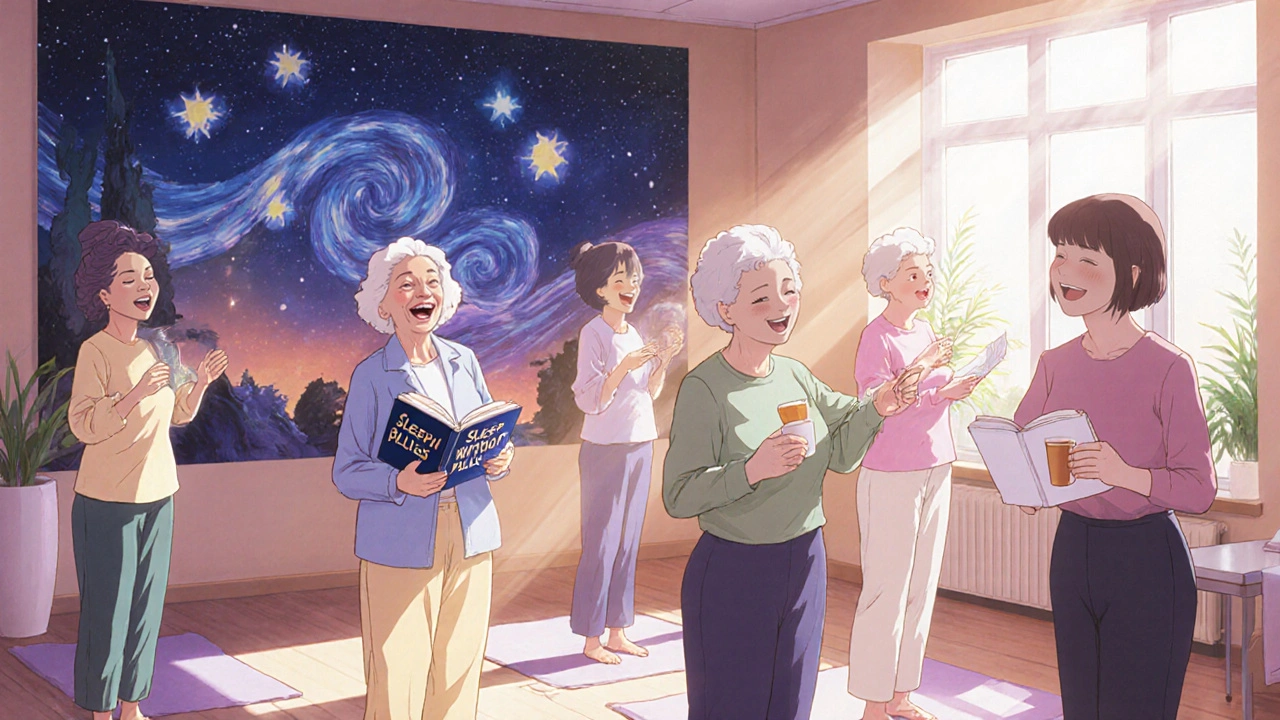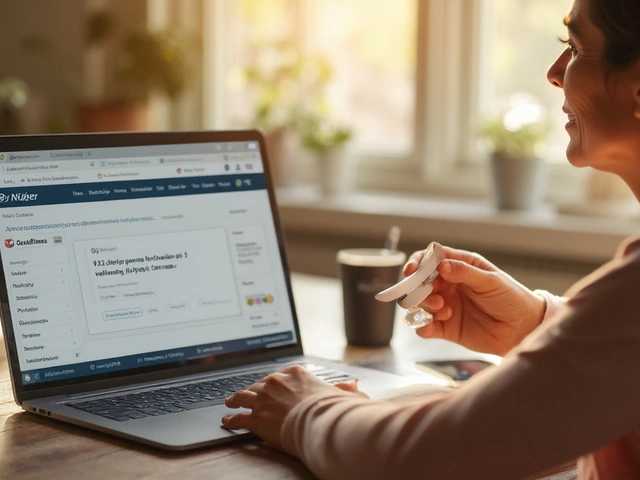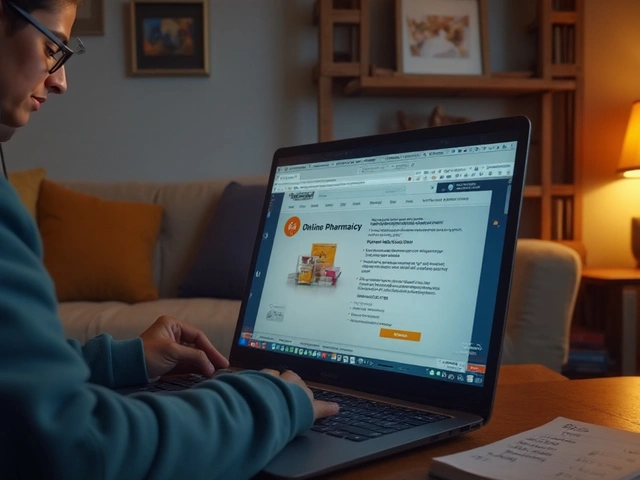
By age 65, nearly half of all adults struggle with sleep. It’s not just tossing and turning - it’s waking up tired, forgetting names, stumbling in the dark, or feeling foggy all day. Many turn to sleep pills, thinking they’re a quick fix. But for seniors, those pills can be more dangerous than the insomnia itself.
Why Sleep Meds Are Riskier After 65
Your body changes as you age. Your liver and kidneys don’t process drugs the same way. A pill that clears your system in 4 hours when you’re 40 might stick around for 12 hours at 70. That’s why even small doses of common sleep aids can leave you dizzy, confused, or unsteady the next morning.The American Geriatrics Society has been warning doctors since 1991: avoid benzodiazepines like diazepam (Valium) and triazolam (Halcion) in older adults. These drugs don’t just help you sleep - they increase your risk of falls, fractures, memory loss, and even dementia. A 2014 study in the BMJ found people who took long-acting benzodiazepines for more than six months had an 84% higher chance of developing Alzheimer’s.
Z-drugs like zolpidem (Ambien) and eszopiclone (Lunesta) were marketed as safer alternatives. But the FDA issued a safety alert in 2017: even at half the usual dose, zolpidem raises fall risk by 30% in seniors. One woman in Portland, 72, broke her hip after getting up to use the bathroom at 3 a.m. - she’d taken Ambien the night before and didn’t realize how groggy she still was. Her story isn’t rare.
The Hidden Costs of Sleeping Pills
It’s not just falls. Sleep meds can mess with your brain in ways you don’t notice until it’s too late. A 2022 study from UCSF showed seniors who took sleep medications 5 to 15 times a month had a 79% higher risk of dementia - but only among white patients. That gap points to something deeper: access. Black seniors are far less likely to be prescribed these drugs, not because they sleep better, but because they’re less likely to see a doctor who thinks to prescribe them.Then there’s the cost. Generic zolpidem costs about $15 a month. But the safer alternatives? Low-dose doxepin (Silenor) runs $400 a month without insurance. Ramelteon and lemborexant aren’t much better. Many seniors choose the cheaper, riskier option - and pay the price later with ER visits or long-term care.
And here’s the cruel twist: most sleep meds don’t even work well long-term. Your body builds tolerance. You need more to get the same effect. Then you stop - and rebound insomnia hits harder than before. It’s a cycle that traps people in dependency.
What the Experts Say Now
The American Academy of Sleep Medicine doesn’t just warn against sleep meds - it says they shouldn’t be the first thing you try. Their 2017 guidelines put cognitive behavioral therapy for insomnia (CBT-I) at the top of the list. Not pills. Not melatonin. A structured, evidence-based program that retrains your brain and body to sleep naturally.CBT-I isn’t about counting sheep. It’s about fixing the habits that keep you awake: lying in bed awake for hours, checking the clock, napping too much, or using your bedroom for scrolling and watching TV. A 2019 JAMA study showed telehealth CBT-I helped 57% of seniors with chronic insomnia - and 89% stuck with it. That’s better than any pill.
Dr. Phyllis Zee from Northwestern says the future of sleep care for seniors isn’t one-size-fits-all medication. It’s precision: matching treatment to your body, your risks, your lifestyle. For someone with mild insomnia and no fall history, a low-dose melatonin might help. For someone with a history of confusion or balance issues? CBT-I is the only safe starting point.

Safe Alternatives That Actually Work
If you need a medication, here’s what experts recommend - in order of safety:- Low-dose doxepin (3-6 mg): Originally an antidepressant, at this tiny dose it’s a gentle sleep aid. It doesn’t cause next-day grogginess or increase fall risk. A 2010 study found it added nearly 30 minutes of sleep and improved sleep quality without the side effects of other drugs.
- Ramelteon (8 mg): Works on your body’s natural melatonin receptors, not your brain’s sedation centers. It helps you fall asleep faster - about 14 minutes quicker on average - and doesn’t cause dependency or withdrawal.
- Lemborexant (5-10 mg): The newest option. It blocks wakefulness signals in your brain, not sleep signals. A 2021 JAMA study found it caused less postural instability than zolpidem in seniors. Still expensive, but safer.
- Melatonin (2-5 mg): Not a sedative. Just a gentle nudge to your internal clock. Best for people with irregular sleep schedules or jet lag. Avoid high doses - they can cause dizziness or headaches.
These aren’t magic. They still need to be monitored. But compared to benzodiazepines or zolpidem, they’re like choosing a bicycle over a motorcycle in a snowstorm.
Deprescribing: Getting Off Sleep Meds Safely
If you’ve been on sleep pills for months or years, quitting cold turkey can make insomnia worse. That’s why experts use a method called deprescribing.The STOPP/START guidelines recommend tapering slowly - reducing your dose by 10-25% every 1-2 weeks. For benzodiazepines, that might mean going from 10 mg to 7.5 mg, then 5 mg, then 2.5 mg over 6-8 weeks. Work with your doctor. Don’t do this alone.
One man in Ohio, 78, had been on Lunesta for 12 years. He felt foggy all day and was afraid to drive. With CBT-I and a slow taper, he cut his dose in half in 10 weeks. Six months later, he sleeps 6-7 hours a night - without pills. He says, “I didn’t know I could feel this clear again.”

What You Can Do Today
You don’t have to wait for a doctor’s appointment to start improving your sleep. Try these steps now:- Get daylight every morning. Even 15 minutes outside helps reset your body clock.
- Stop screens 90 minutes before bed. Blue light blocks melatonin. Read a book instead.
- Keep your bedroom cool and dark. Temperature matters more than you think - aim for 65°F.
- Only go to bed when sleepy. If you’re lying awake for more than 20 minutes, get up and sit in a dim room. Return only when drowsy.
- Write down worries before bed. A 5-minute journaling habit can quiet racing thoughts.
And if you’re on a sleep medication right now? Ask your doctor: “Is this still the safest choice for me?” Don’t assume it’s fine because you’ve been on it for years. Your body’s changed. Your risks have changed. Your treatment should too.
Why This Matters More Than You Think
Sleep isn’t just about feeling rested. It’s about staying independent. Falling once can mean losing your home, your freedom, your dignity. Memory loss can mean forgetting to take your blood pressure pills - or your insulin. Poor sleep accelerates decline.But better sleep doesn’t require a prescription. It requires awareness. It requires courage to say no to a quick fix. It requires patience to try something that takes weeks, not hours.
The best sleep strategy for seniors isn’t a pill. It’s a plan - one built on safety, science, and self-care. And it’s within reach for anyone willing to start.
Are over-the-counter sleep aids safe for seniors?
Most over-the-counter sleep aids contain diphenhydramine or doxylamine - antihistamines that cause drowsiness. These are especially risky for seniors because they have strong anticholinergic effects, which can lead to confusion, dry mouth, constipation, urinary retention, and increased fall risk. The American Geriatrics Society lists them as potentially inappropriate for older adults. Even though they’re available without a prescription, they’re not safer - just more accessible.
Can melatonin help seniors sleep better?
Yes - but only for certain types of sleep problems. Melatonin helps regulate your internal clock, so it’s useful if you go to bed too early or wake up too early. It doesn’t make you sleep deeper or longer like a sedative. For best results, take 2-5 mg about 1 hour before bed. Avoid doses over 5 mg - they can cause headaches, dizziness, or next-day grogginess. It’s not a cure for chronic insomnia, but it’s one of the safest options if used correctly.
Is CBT-I really better than sleeping pills?
Yes - and the evidence is clear. A 2019 JAMA study showed CBT-I helped 57% of seniors with chronic insomnia achieve remission, with results lasting over a year. Sleeping pills might help you fall asleep faster for a few weeks, but they don’t fix the root cause. CBT-I teaches you how to sleep without relying on drugs. It’s more work upfront, but it’s the only treatment proven to work long-term without side effects. Many seniors report feeling more alert, confident, and in control after completing CBT-I.
Why are seniors prescribed sleeping pills so often?
It’s often easier for doctors to write a prescription than to refer someone to a sleep specialist or teach behavioral strategies. Many primary care visits are only 10-15 minutes long. There’s also a misconception that insomnia is just a normal part of aging - when it’s not. Insurance coverage for CBT-I is improving, but access is still limited. And pharmaceutical marketing pushes pills, not programs. The result? Seniors get pills because they’re fast, familiar, and easy - even when they’re not the best choice.
What should I do if I’m already on a sleep medication?
Don’t stop suddenly - that can cause rebound insomnia or withdrawal symptoms. Talk to your doctor about a tapering plan. Start by asking: “Is this medication still necessary?” and “What’s the safest way to reduce or stop it?” Meanwhile, begin one behavioral change - like getting morning sunlight or cutting screens before bed. Small steps build momentum. Many seniors successfully reduce or eliminate sleep meds with the right support - but they need guidance, not just advice.
Are there free or low-cost CBT-I options for seniors?
Yes. Several digital platforms like Sleepio and CBT-I Coach are available at low cost or even free through some Medicare Advantage plans and veteran programs. Libraries and senior centers sometimes offer group CBT-I workshops. The National Sleep Foundation and the American Academy of Sleep Medicine have free resources online. You don’t need to pay hundreds of dollars to start - just start somewhere. Even 10 minutes a day of sleep hygiene changes can make a difference.





Comments (13)
Mark Kahn
Hey everyone, just wanted to say this post is a game-changer. I’ve been helping my dad cut down on Ambien after he nearly fell down the stairs last winter. CBT-I was scary at first, but now he’s sleeping better than he has in 10 years - no pills, no grogginess, just peace. You guys aren’t alone in this. Small steps matter.
Leo Tamisch
How quaint. We’ve known for decades that pharmaceutical companies weaponize sleep as a commodity. The real tragedy isn’t the pills - it’s that we’ve outsourced our biological rhythms to corporate pharmacopeias while pretending ‘wellness’ is a product you can buy at CVS. 🤡
Daisy L
OH MY GOSH, YES!! These drugs are a national disgrace!! We’re letting Big Pharma turn our grandparents into walking zombies just so they can get 7 hours of sleep??!! We need to BAN these meds for seniors - like, NOW!! And someone tell Congress to fund CBT-I like it’s a national emergency!!
Anne Nylander
omg this is so true!! i just got my mom off zolpidem last month and she’s like a new person!! no more tripping over the rug, no more forgetting my birthday!! she started doing the 15-min walk in the morning and now she’s singing in the kitchen 😭 we’re all gonna be okay!!
Franck Emma
My aunt died from a fall. Ambien. 82. No one warned her. Now I’m mad.
Noah Fitzsimmons
Wow. A whole article about sleep and not one mention of how millennials are ruining circadian rhythms with TikTok? You think your grandma’s on Ambien because she’s old? Nah. She’s on it because her kids won’t turn off the lights at 10 PM and let her sleep. Blame the phone, not the pill.
Eliza Oakes
Actually, I think the real issue is that we’re pathologizing normal aging. My 76-year-old neighbor sleeps 5 hours a night and she’s fine. She reads, gardens, and doesn’t care about ‘sleep hygiene.’ Maybe the problem isn’t the pills - it’s our obsession with 8-hour sleep as some kind of moral imperative?
Clifford Temple
This is why America is falling apart. We let foreign drug companies poison our elders because we’re too lazy to teach discipline. Back in my day, we slept when the sun set and woke with the rooster. No pills. No therapy. Just grit. We need to go back to real American values - not this soft, pill-popping nonsense.
Corra Hathaway
Y’ALL. I just started CBT-I through my VA app and I’m already sleeping better. No more 3 a.m. panic. No more blaming myself. It’s not magic - it’s just science. And guess what? It’s FREE. You don’t need a fancy doctor. You just need to start. 🙌 You got this.
Shawn Sakura
Thank you for this comprehensive and deeply thoughtful exposition on the neurophysiological and pharmacological implications of sedative use in geriatric populations. While I acknowledge the efficacy of CBT-I, I must respectfully note that the accessibility gap in rural and low-income communities remains a structural impediment to equitable care. I have personally witnessed the transformative power of low-dose doxepin in my mother’s case - though I did have to appeal three times to Medicare for coverage. Please, let us not reduce this issue to a binary of ‘pills bad, therapy good.’ Nuance is necessary.
Paula Jane Butterfield
Hi everyone - I’m a retired nurse and I’ve seen this too many times. My favorite tip? Get that morning sun. Even on cloudy days, 10 minutes outside resets your whole system. And if you’re scared to quit pills? Talk to your pharmacist. They’re not just there to hand out meds - they can help you taper safely. I’ve helped 12 seniors get off Ambien. No one died. Everyone slept better. You can do this.
Simone Wood
As a sleep physiologist with a PhD from UCL, I must emphasize that the 84% Alzheimer’s correlation cited is confounded by reverse causality - individuals with prodromal dementia are more likely to be prescribed benzodiazepines due to agitation, not the other way around. Also, melatonin’s half-life in elderly populations is significantly prolonged, rendering 5mg doses potentially neurotoxic. The real issue? Poor trial design in most CBT-I studies. You’re all being sold a narrative.
Mark Kahn
Thanks for the data, Simone - but my dad’s doctor ran the same tests you’re talking about. He had no signs of dementia before starting Ambien. After 3 years? Memory tests dropped 30%. After quitting? They went back up. I’ve seen it. Science doesn’t lie - even when it’s uncomfortable.